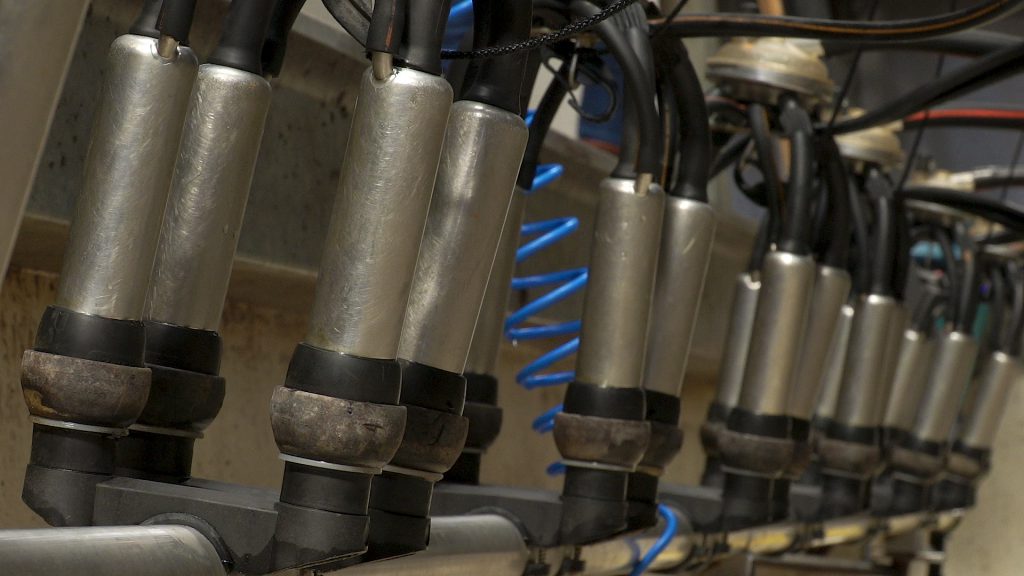On a dairy farm, the most important machine in the yard is the milking machine. It is used twice-a-day up to 365 days a year.
But your milking machine is also a potential source of infection spread and teat damage, if not maintained correctly.
Milking machine maintenance
The milking machine is the only piece of farm machinery that comes into direct contact with a cow’s teat. This makes it high risk for spreading mastitis-causing bacteria from cow to cow.
If the machine is not working properly it can damage blood vessels and cause hyperkeratosis at the teat end.
For these reasons, your milking machine requires a regular service and maintenance.
Daily checks
During daily milking there are several checks that should be completed to ensure that the milking parlour is operating correctly.
The vacuum level should be checked and farmers must ensure that there is no fluctuation during the milking. In general, the parlour should be operating at 47-48kpa – but this figure can vary depending on the milking machine brand and size.
During the milking you should be listening to the pulsators to check that they are in sync and get the machine tested if they are not.
The air admission holes in the claw pieces should be clear of obstruction; a blockage will cause milk to be removed slower, leading to a fluctuation in the vacuum or liner slip.
Cows’ teats should be checked as cups come off. If there is discolouration, there may be a problem with high vacuum, poor pulsation, over-milking or incorrect liners.
A tell-tale sign that something is amiss during milking is if the cows are unsettled. This can be an indication of an issue with your parlour.

Weekly checks
Some weekly checks that should be completed in the milking parlour include checking twisted liners to ensure that markers are aligned.
You should keep the filters on pulsator airlines clean, and listen to the regulator to ensure that it is admitting air. The volume of air should reduce when clusters are attached.
Liners are meant to last 2,000 or six months, but every farmer has had liners damaged before reaching this point.
Another weekly check is to open and drain valves on pulsator airlines – any milk or water in the lines suggest a cracked liner or pulse tube. The oil level in the vacuum pump should also be checked.

Milking time
Another check that farmers should be completing is milking time – this will vary from farm to farm, and cow to cow. But on average, from milk let-down to finish, it should usually take five to seven minutes.
If your parlour takes longer or is quicker than this, an investigation may be required to determine if there is an issue.
During a milking, record the number of liner slips that need to be corrected by the milker.
Five or less is acceptable for a 100-cow herd, greater than ten will require an investigation.
